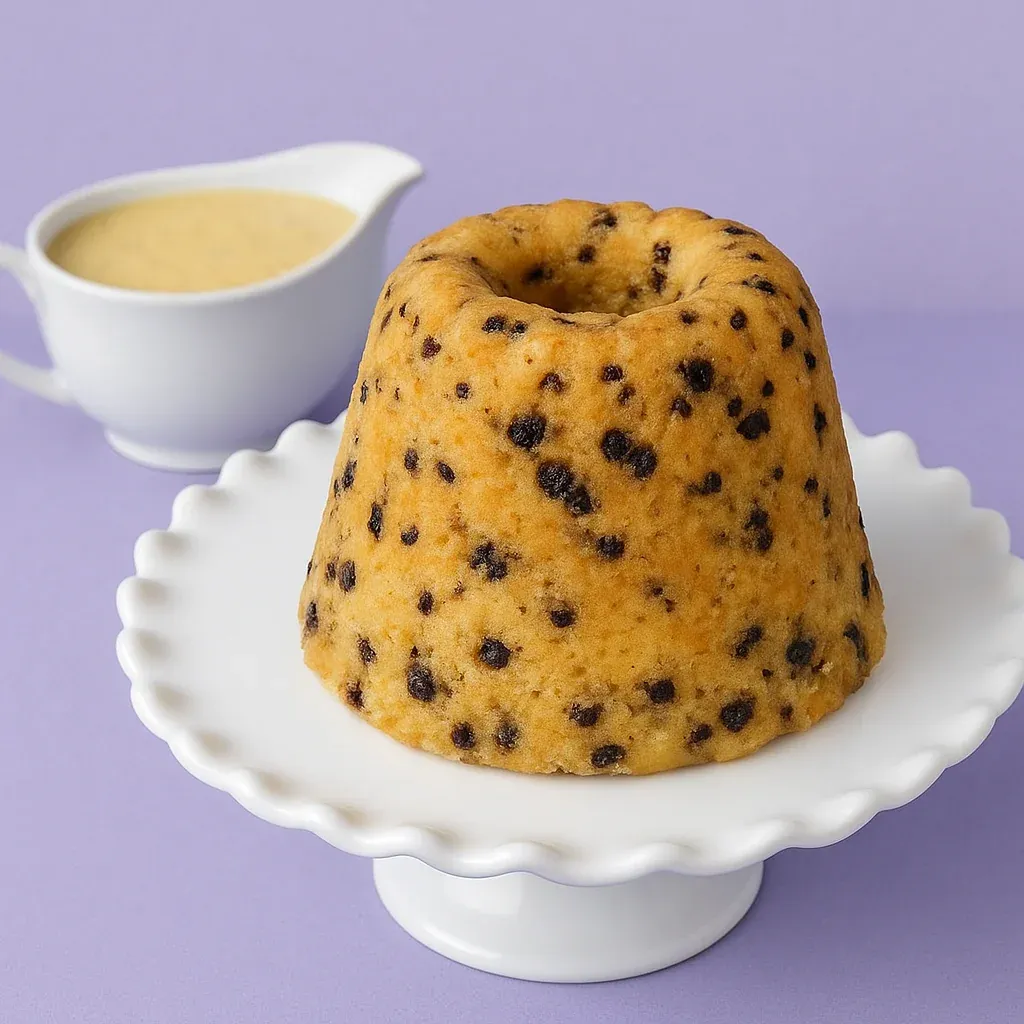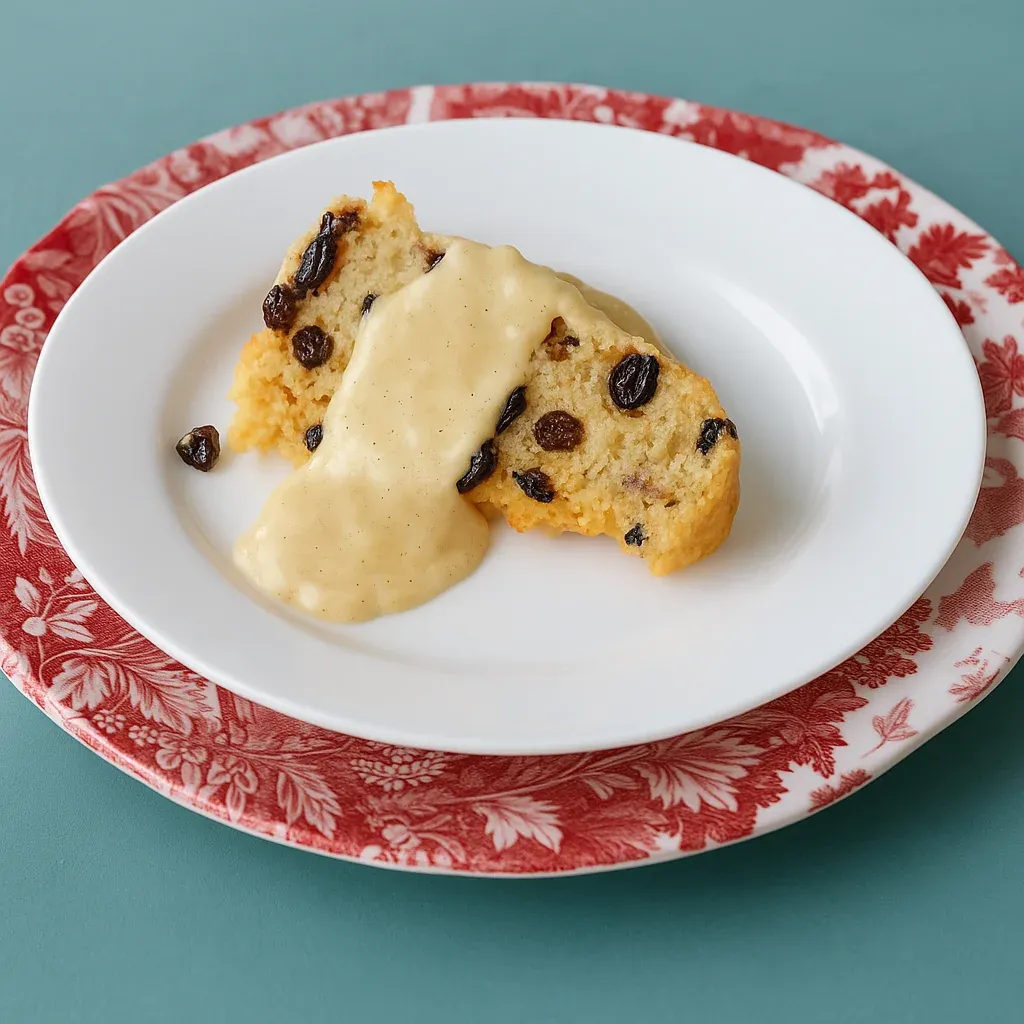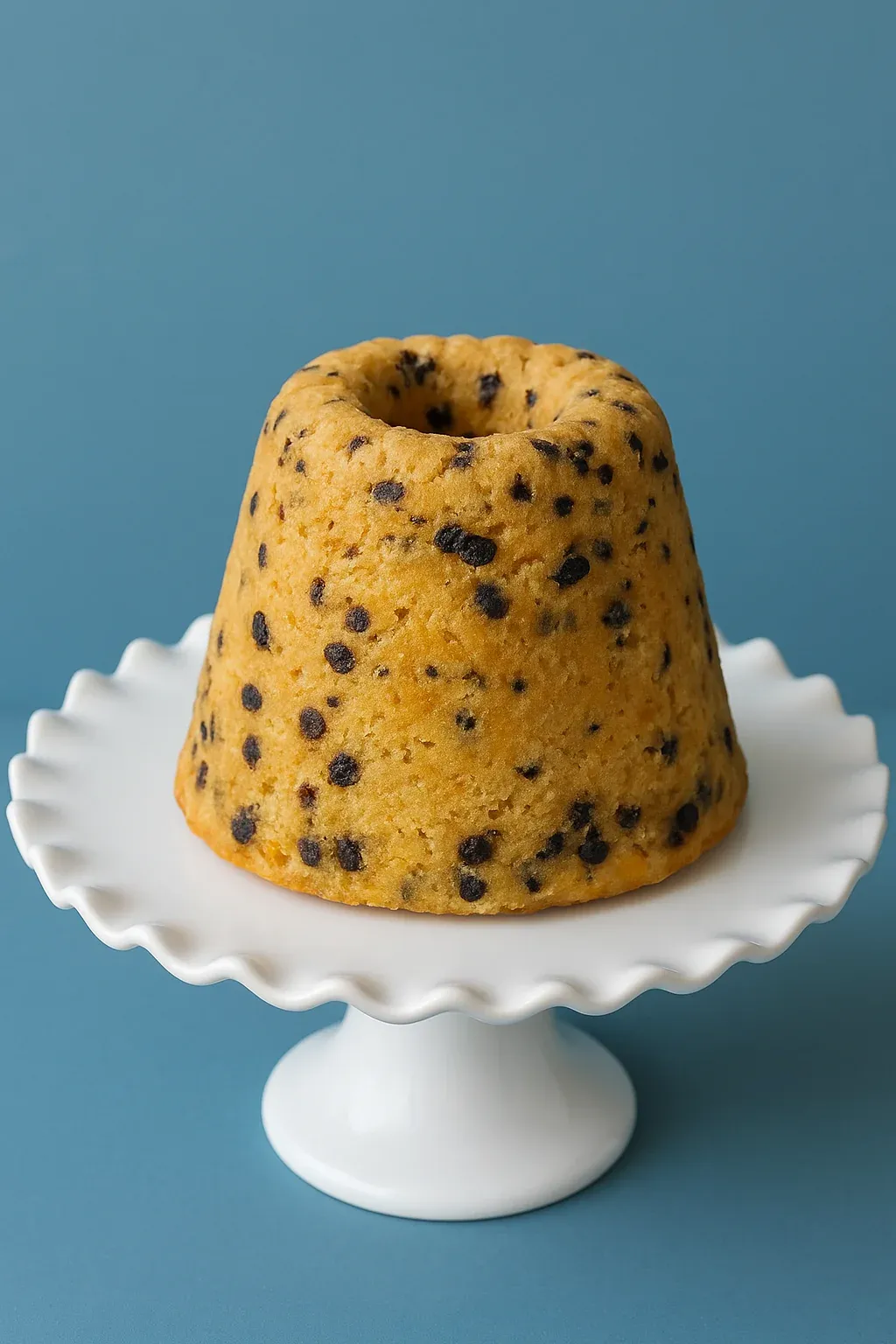 Pin it
Pin it
This traditional Spotted Dick recipe brings a slice of British comfort food history to your kitchen. The steamed pudding's pillowy texture and sweet currant-studded appearance has been warming British homes for generations, and it remains one of my favorite ways to end a Sunday meal.
I first discovered Spotted Dick while studying in London years ago, and I've been perfecting this recipe ever since. What started as a curiosity about the admittedly funny name became a genuine appreciation for this humble yet satisfying pudding.
Ingredients
- All Purpose Flour: forms the sturdy base for this steamed pudding giving it structure while staying tender
- Baking Powder: provides the lift needed for the perfect spongy texture
- Salt: enhances all the flavors and balances the sweetness
- Beef Suet: creates pockets of richness as it melts during steaming for an authentic texture
- Caster Sugar: delivers just the right sweetness without overpowering the other flavors
- Dried Currants: provide the signature spots and bursts of natural sweetness
- Milk: moistens the dough and helps create the pudding's soft crumb
- Vanilla Extract: adds warmth and depth to the overall flavor profile
- Lemon Zest: brightens everything with its subtle citrus notes
- English Custard Sauce: completes the dessert with its creamy richness
Step-by-Step Instructions
- Prepare the Steaming Setup:
- Place metal cookie cutters or a folded kitchen towel in the bottom of a large stockpot. This creates a buffer so the pudding mold doesn't touch the bottom of the pot directly. Fill with enough water to reach halfway up your pudding mold and bring to a boil. Meanwhile generously butter a 1.6 liter pudding mold to prevent sticking.
- Mix the Dry Ingredients:
- Combine flour sugar baking powder salt and suet in a food processor. Pulse until the mixture resembles coarse sand with small visible bits of fat. Transfer this mixture to a large mixing bowl. The texture at this stage is crucial for achieving those light pockets in the finished pudding.
- Add Wet Ingredients and Currants:
- Pour in the milk lemon zest and vanilla extract. Add the currants and stir everything together with a wooden spoon until well combined. The batter will be thick and somewhat sticky. Be careful not to overmix as this can make the pudding dense.
- Fill the Pudding Mold:
- Spoon the batter into your greased pudding mold and smooth the top with the back of a spoon. Secure the lid tightly to prevent water from seeping in during the steaming process. If using foil and string make sure it's sealed completely around the edges.
- Steam the Pudding:
- Carefully lower the pudding mold into the boiling water. Reduce heat to maintain a steady simmer rather than a rolling boil. Steam for 3 to 4 hours if using traditional suet or about 90 minutes if using butter. Check water levels periodically and top up with boiling water as needed to maintain the halfway point up the mold.
- Let the Pudding Rest:
- Once steaming is complete remove the mold from the pot and let it sit undisturbed for 15 minutes. This resting period helps the pudding settle and makes unmolding easier. Run a thin knife around the edge if needed before turning out.
- Serve:
- Turn the pudding out onto a warmed serving plate. Slice into generous wedges and serve immediately with warm English custard poured over the top. The contrast between the warm pudding and creamy sauce is absolutely delightful.
 Pin it
Pin it
The History Behind Spotted Dick
This traditional British pudding dates back to the Victorian era when steamed puddings were a staple in British cuisine. The name "spotted" refers to the currants throughout the dough while "dick" is believed to come from an old English word for pudding. Originally a way to use up stale bread and affordable ingredients it has remained popular through generations despite its amusing name that makes foreigners giggle.
Storage and Make-Ahead Tips
Spotted Dick keeps remarkably well in the refrigerator for up to three days. Wrap leftover portions in plastic wrap or store in an airtight container. To reheat simply steam again for about 30 minutes or microwave individual portions for 30-45 seconds until just warmed through. The texture remains surprisingly good even after refrigeration.
Serving Suggestions
While English custard is the traditional accompaniment for Spotted Dick you can also serve it with warm caramel sauce or even vanilla ice cream for a delightful temperature contrast. For an extra special touch add a splash of brandy to your custard or top with a spoonful of clotted cream. This dessert works beautifully after a Sunday roast or as the finale to a British-themed dinner party.
 Pin it
Pin it
Perfect Custard Technique
Creating the ideal custard sauce requires patience and attention. Heat your milk and vanilla until just below simmering then slowly pour into beaten egg yolks and sugar while whisking constantly. Return to low heat and stir continuously until the mixture coats the back of a spoon. Never allow it to boil or you will end up with scrambled eggs. Strain through a fine mesh sieve for the silkiest texture possible. The custard should be pourable but thick enough to coat the pudding nicely.
Frequently Asked Questions
- → What is Spotted Dick?
Spotted Dick is a traditional British steamed pudding made with suet, dried currants, and lemon zest. Its unique texture and 'spotted' appearance come from the currants evenly distributed throughout the dough.
- → Can I use butter instead of suet?
Yes, you can substitute chilled, grated butter for suet. While suet provides an authentic texture, butter works well and is more commonly available.
- → What is traditionally served with Spotted Dick?
Spotted Dick is traditionally served warm with a generous drizzle of creamy English custard, which complements the pudding’s rich flavors beautifully.
- → How do I steam Spotted Dick without a mold?
If you don’t have a pudding mold, you can use a heatproof bowl covered with foil secured by string. Ensure the bowl fits into your pot and allow space for the pudding to expand.
- → What can I use instead of currants?
If currants are unavailable, you can use raisins or sultanas as substitutes. Mixed dried fruits also work well for added flavor complexity.
- → How long can I store Spotted Dick?
Spotted Dick can be stored in an airtight container in the refrigerator for up to 3 days. Reheat by steaming or microwaving until heated through.
- → Can I customize the flavors of Spotted Dick?
Yes, you can customize it with additional ingredients like a pinch of cinnamon, nutmeg, or chopped nuts to enhance the flavor profile to your liking.
